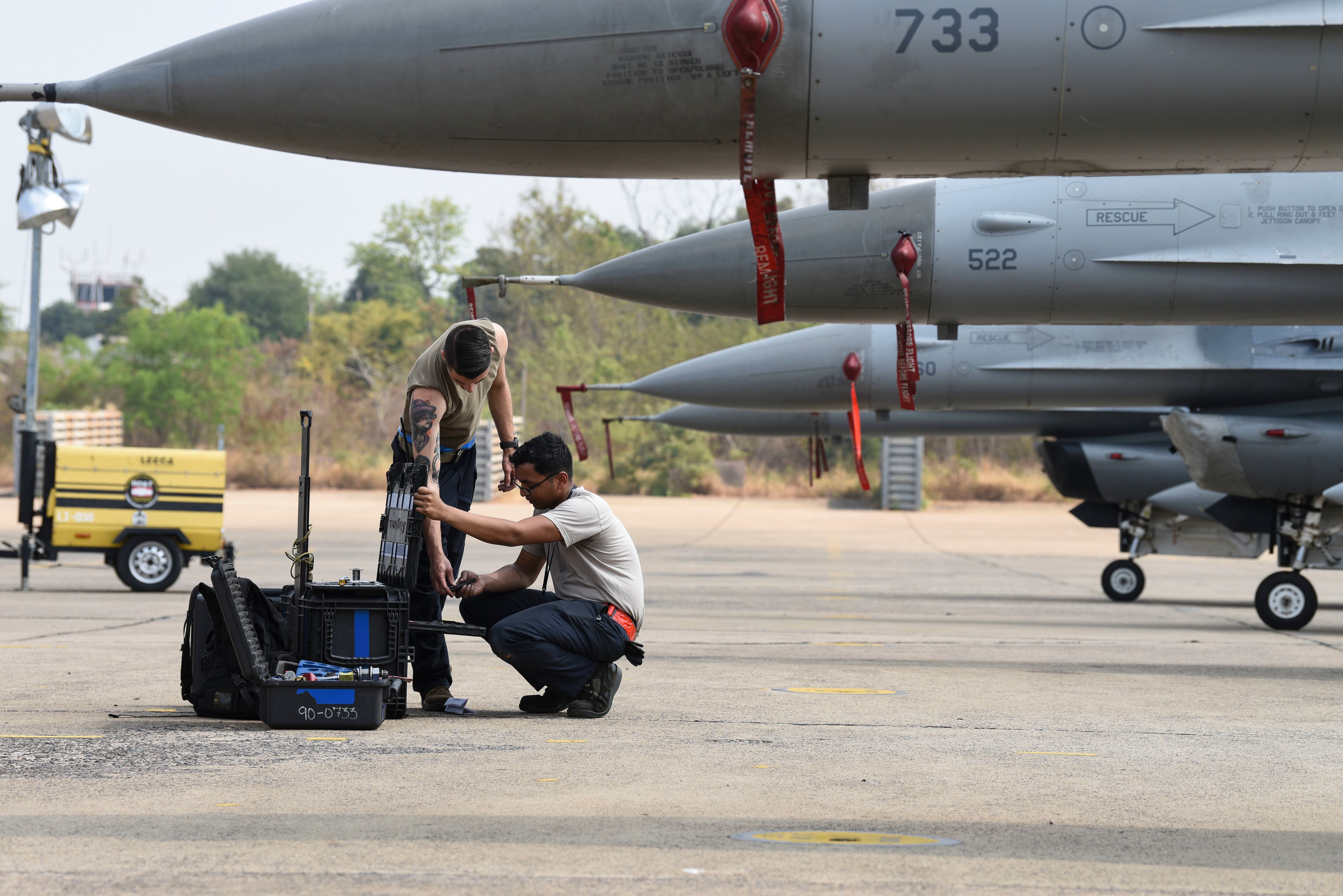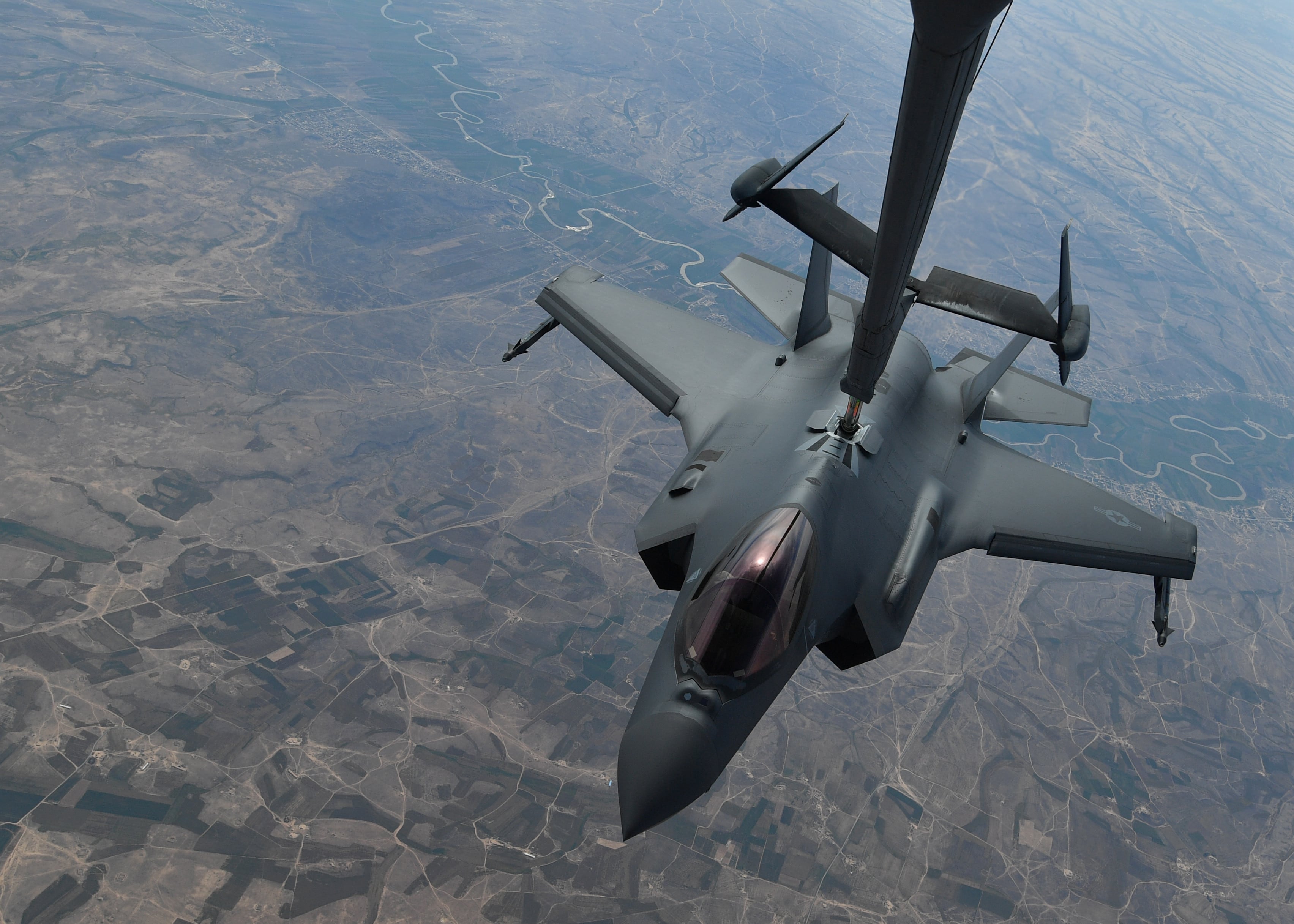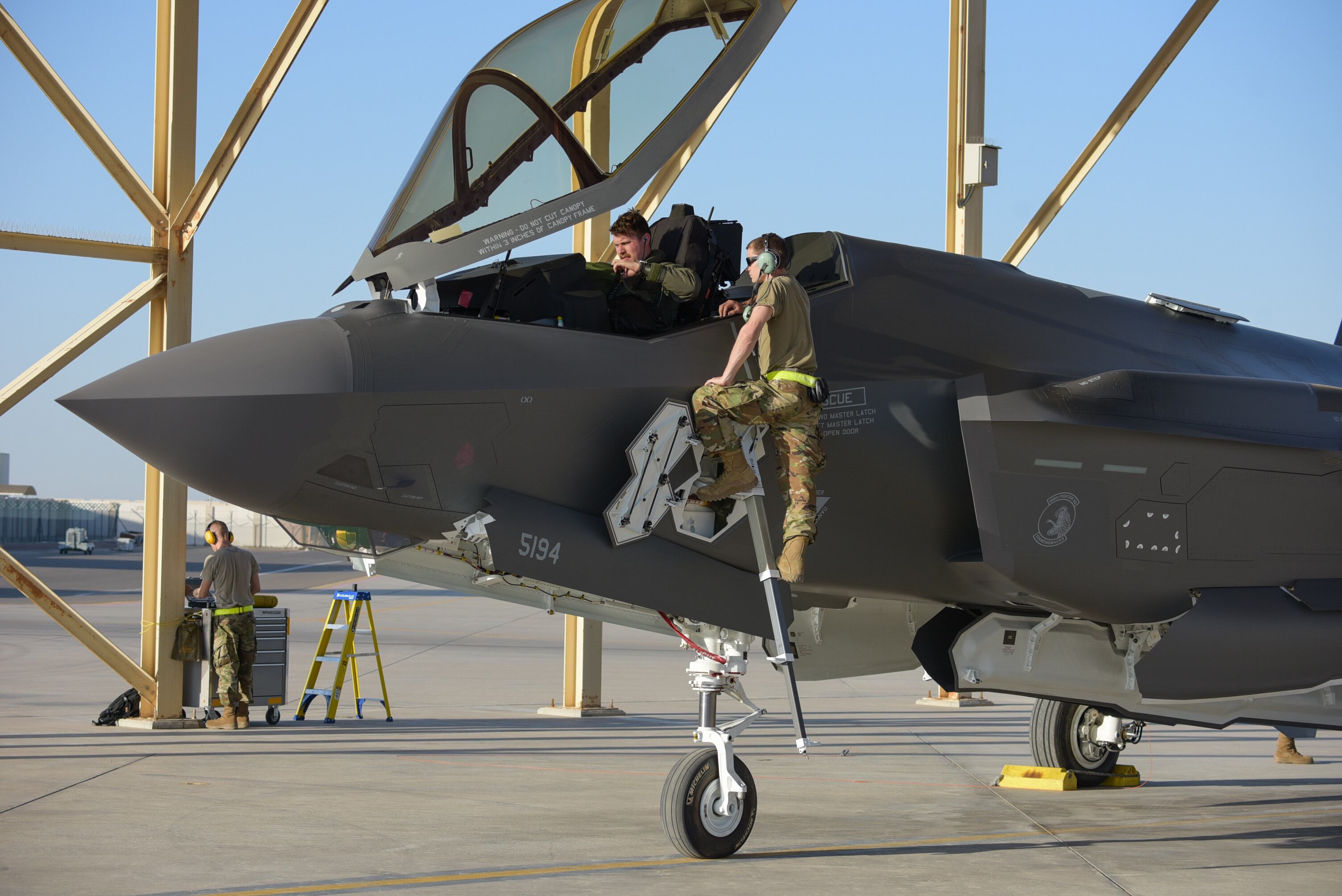WASHINGTON — The Super Hornet is set to meet the 80 percent mission-capable rate goal by the end of the year, the Pentagon’s top civilian said Wednesday, but it remains unclear whether the F-35, F-22 and F-16 will be able to meet the mark.
Last fall, then-Defense Secretary Jim Mattis gave the Air Force, Navy and Marine Corps until the end of fiscal 2019 to bring their F-35s, F/A-18E/F Super Hornets, F-22 Raptors and F-16s up to an 80 percent mission-capable rate — a key metric to determine the health of a flying squadron’s aircraft.
RELATED

Of those, the “real emphasis was on the F-35 and F/A-18,” acting Defense Secretary Patrick Shanahan said May 1 during a House Appropriations Committee panel, and the Super Hornet has made a “tremendous” amount of headway over the past year.
“The Navy has made significant progress with the F/A-18s. I think they’re on track to meet the goal in September,” he told lawmakers.
However, Shanahan suggested the F-22 and F-16 are unlikely to hit the 80 percent goal, adding that the F-22 “has struggled” and the F-16 “is a bit of a high bar” to clear.
RELATED

Shanahan was unclear on whether the F-35 — which is available in three different variants used by the Air Force, Marine Corp and Navy — will be able to meet the mandate this year.
“The F-35s, being brand-new aircraft, that [80 percent] should be the baseline where we start,” he said. “The F-35 will come home. We’re going to drive that home.”
In a statement to Defense News, Marine Corps spokesman Capt. Chris Harrison said the service’s F-35s are on track to meet the 80 percent mission-capable rate by the beginning of FY20, and “operational squadrons [currently are] consistently performing in the mid-to-high 60% range.”
The Air Force and Navy did not provide information about the F-35’s progress by press time.
The services stopped publishing mission-capable rate statistics last year, citing operational sensitivity, but a March report by the Government Accountability Office found all variants of the F-35 operated at a mission-capable rate of about 50 percent from a period of May to November 2018.
RELATED

However, Mattis’ mandate specifies that only the F-35s used by operational squadrons must meet the readiness marker. Because there are only a small number of operational F-35 squadrons, and those units typically have newer and more reliable aircraft, the services may stand a better chance of getting to the 80 percent rate.
Air Force spokeswoman Ann Stefanek concurred with Shanahan’s assessment of the F-16 and F-22, saying that damage from Hurricane Michael to Tyndall Air Force Base’s F-22s and ongoing difficulties with maintaining the F-22’s low-observable coating were likely to prevent the Raptor from achieving an 80 percent mission-capable rate this year.
However, the service remains “optimistic” that it will be able to get its F-16s over the finish line by the end of FY19, she said.
Given the low availability of tactical aircraft in recent years, it would be an impressive accomplishment to get any of the fighter jets to meet the 80 percent goal.
In August, Navy Secretary Richard Spencer told reporters that half of the service’s Super Hornet aircraft were mission capable — a huge increase from 2017 when two-thirds of the fleet were unavailable to fly.
In 2017 — the last year the Air Force put out data — F-22s held a 49 percent mission-capable rate and the F-16 hovered around 65 to 70 percent, depending on the model.
Despite the services’ difficulties meeting the aviation readiness goal, Shanahan maintained that pushing toward an 80 percent mission-capable rate for those platforms was a worthy endeavor.
“It’s a lot of iron to keep on the ground, and given all the training missions and the productivity we can generate, I think holding that standard is smart for now,” he said.
Valerie Insinna is Defense News' air warfare reporter. She previously worked the Navy/congressional beats for Defense Daily, which followed almost three years as a staff writer for National Defense Magazine. Prior to that, she worked as an editorial assistant for the Tokyo Shimbun’s Washington bureau.





